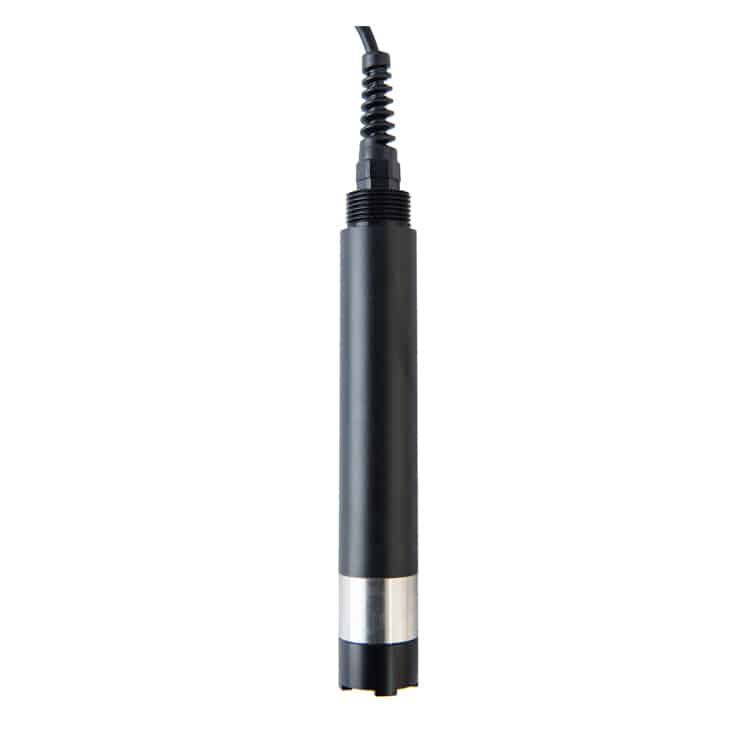An aquarium is a container or device specially used to support and display aquatic organisms. Understanding the pH tolerance of aquatic organisms is critical to maintaining the health of fish and other organisms in the aquarium. Every aquatic organism has a specific pH range outside which they can be dangerous. Therefore, it is critical to identify and resolve problems caused by high or low pH in a timely manner.
PH Level of The Aquariums
What is an aquarium?
An aquarium is a device used to grow and display aquatic organisms, usually made of transparent materials such as glass, plastic or acrylic. It is a closed container that is filled with water and provides a habitable environment for aquatic life.
What is pH?
As a parameter to measure the acidity and alkalinity of a solution, the pH value is widely used in various industries, with values ranging from 0 to 14. PH value of 7 is considered neutral, with values below 7 being acidic and values above 7 being basic. This scale is logarithmic, so each pH unit represents a 10-fold change in the concentration of an acid or base. For example, a solution at pH 4 is 10 times more acidic than a solution at pH 5.
PH Index Range for Different Aquariums
- Freshwater tank: pH is between 6.0 and 7.5, depending on the fish you keep
- Seawater Tank: pH 7.6 to 8.4
- Tropical tanks: Slightly acidic water pH 6.0 to 7.0
- Coral Reef: pH 8.0 to 8.4
Symptoms of an out-of-balance aquarium pH
Changes in fish behavior
The fish may have difficulty swimming, float or sink abnormally, or become unusually active. The fish’s breathing becomes faster and the color of the fish body becomes lighter. When the pH value is too high or too low, the fish may show difficulty in breathing and the breathing speed becomes faster. These could all be signs of a pH imbalance.
Plant growth problems
Plants in the aquarium may experience growth problems due to pH imbalances, such as stunted growth of new leaves, or yellowing of leaves.

Algae overgrowth
When the pH is too high, it can cause an overgrowth of certain algae, which can turn the water green.
Importance of pH In The Aquarium
- Biochemical processes: pH affects many biochemical processes in fish, including respiration, digestion, nerve function, ion exchange, and muscle contraction. The normal operation of these processes usually requires a specific pH environment.
- Respiration: Fish breathe through their gills, the function of which is affected by pH. If the pH value is too high or too low, it may cause gill burns or damage to the gill mucosa, which will affect the fish’s respiration.
- Toxic substances: The toxicity of certain substances in water can be affected by the pH. Ammonia, for example, is more toxic at high pH. Therefore, maintaining a proper pH can reduce the toxicity of these substances.
- Reproduction: Certain fish species require a specific pH environment to reproduce. For example, many Amazonian tropical fish reproduce more successfully in acidic waters.
Common Aquarium pH Questions and Measures
Reasons for Low PH In Aquariums
- The pH of an aquarium can drop due to a number of factors
- Decomposition of organic matter
- Elevated CO2 concentration
- Effect of filter material
- PH value of water source
- Lack of water change
Responses
- Use a neutral water source: Choose a water source with a neutral pH and be mindful of the pH when filling.
- Make sure the aquarium is properly cleaned: regularly remove organic waste from the bottom to prevent it from degrading and producing too much acid.
- Use buffers: Use suitable buffers to stabilize the pH and keep it within the desired range.
Reasons for High PH In Aquariums
- Hard water
- Excessive light
- Decorations
- Lack of proper filtering
- Algal overgrowth:
- Excessive ventilation
Responses
Use an appropriate water source: Choose a water source that has a low alkalinity, or use treated water for aquarium filling.
Change the water quality regularly: Change part of the water quality regularly to maintain a stable pH value.
Adjusting the Filtration System: To ensure the filtration system is functioning properly, adjust the filter media appropriately to lower the pH.
The dangers of pH imbalance to the aquarium
- Affects biochemical processes: As mentioned earlier, pH affects many biochemical processes in fish. The proper functioning of these processes requires a specific pH environment. If the pH is too high or too low, the balance of these processes may be disturbed, resulting in impaired physiological functions of the fish.
- Affect breathing: The function of gills, the respiratory organ of fish, will be affected by the pH value. A pH that is too high or too low can damage the gills, which can affect the fish’s respiration.
- Increase the toxicity of toxic substances: the toxicity of certain substances in water, such as ammonia and nitrate, will be affected by the pH value. Ammonia, for example, is more toxic at high pH.
- Affect reproduction: The reproduction of some fish requires a specific pH environment. If the pH is too high or too low, it may affect fish reproduction.
- Cause the death of fish: In extreme cases, the pH value is too high or too low may directly lead to the death of fish.

Maintaining proper water quality is very important to the health management of your aquarium. If the water quality of the aquarium is found to be abnormal, measures should be taken to adjust it as soon as possible.
Parameters of Aquarium Water Quality
| Parameter | Meaning | Range of Values |
| pH Value | pH of Water | 6.0-7.5 |
| Temperature | Water Temperature | 22-28°C |
| Hardness (GH) | The content of calcium and magnesium ions in water | 4-12 dGH |
| Alkalinity (KH) | The content of carbonates and hydrocarbonates in water | 4-8 dKH |
| Dissolved Oxygen (DO) | Oxygen content in water | should be as high as possible |
| Ammonia (NH3) | Produced by fish excrement and decomposition of organic matter, toxic in high concentrations | should be as low as possible |
| Nitrite (NO2-) | Produced by decomposition of ammonia, toxic in high concentrations. | should be as low as possible |
| Nitrate (NO3-) | Produced by the breakdown of nitrites, may be harmful in high concentrations | < 50 mg/L |
How to raise ph in aquarium?
- Use chemical buffers: There are many commercial products on the market that are designed to raise or lower the pH of the water. These products usually include acidic or alkaline chemical buffers to easily adjust the pH of the water. When using such products, it is important to follow the recommendations in the product label and check the pH regularly to ensure it is within the desired range.
- Add the right amount of carbonates: Carbonates help raise the alkalinity (KH) of the water, which will help raise the pH and keep it stable. A common method is to add alkaline pebbles or coral sand, which slowly dissolve and release the carbonates. Additionally, roasted limestone and shells can also be used to raise the pH.
- Adjust the pH of the water source: If the pH of the water source is too low or too high, it may be necessary to replace the water source or pre-treat the water source. For example, some commercially available water treatment agents can neutralize chlorine and heavy metals in the water, while also adjusting the pH of the water.
How to monitor the pH balance of an aquarium?
- pH strips or liquid test kit: This is an affordable and common test method that includes a set of liquid reagents and a color chart. Users simply follow the instructions to add specific amounts of water sample and reagents, then compare the colors to determine the pH. This method is simple and fast, but is relatively inaccurate and only provides an approximate pH range.
- PH meter: This device can provide more accurate pH measurement results. It uses a pH electrode to measure the pH of the water and displays it on an electronic display. Electronic pH meters require periodic calibration to ensure accuracy. Despite the higher cost of electronic pH meters, they are an excellent option for advanced aquariums that require accurate pH levels.
- Multi-parameter water quality analyzer: In addition to the pH value, the water quality analyzer can measure many other water quality parameters, such as dissolved oxygen, temperature, conductivity, salinity, etc. This type of equipment is typically used in professional aquariums or research institutions where highly precise and comprehensive water quality control is required.
- Nitrate: Nitrate is the product of the last stage of the nitrogen cycle in the aquarium. Generally, it will not cause toxicity to fish, but too high nitrate concentration may cause excessive growth of algae in the aquarium. Nitrate measurement is also commonly used to measure water quality using a nitrate nitrogen meter.
- Electronic dissolved oxygen meter: While dissolved oxygen does not directly affect pH as there is no physicochemical link between the two, in some cases there is an indirect relationship with external factors such as additional nutrients that increase algae growth, so it is also recommended that you use Dissolved oxygen probes and sensors for measuring dissolved oxygen levels in water tanks.


Measures To Maintain The Aquarium
Maintaining a healthy aquarium requires some key steps, including regular cleaning, water quality monitoring and maintenance, and proper fish and plant management. Here are some basic maintenance measures:
- Regular water changes: Water changes can help maintain water quality and remove accumulated waste and potentially harmful substances.
- Clean the equipment: Clean the filters regularly to ensure their effective operation. In addition, the lights and other equipment of the aquarium also need to be cleaned regularly.
- Water quality testing: regular testing of water quality parameters such as pH, dissolved oxygen, ammonia, nitrate and hardness. If problems are found, they should be adjusted in time.
- Disease inspection: Regularly check the fish for any signs of disease, such as lightening of body color, loss of appetite, difficulty in breathing, etc.
- Feeding management: Avoid overfeeding, which may cause water quality problems and health problems.
- Light management: Make sure that the aquarium has proper light every day, but also avoid excessive direct sunlight, so as not to produce excessive algae.
- Appropriate decoration: Provide enough hiding places and swimming space for fish. Additionally, decorative objects such as stone or wood can help adjust the pH of the water.
Summary
Maintaining a proper pH level is very important to the health management of your aquarium. If the pH value is found to be abnormal, measures should be taken to adjust it as soon as possible. With more than 16 years of experience in instrumentation, Apure has developed into a leading instrumentation manufacturer in China and provides one-stop service to global customers. If you have any questions about the pH probes we provide, or are interested in other water quality monitoring instruments, please feel free to contact Apure’s professional team.
